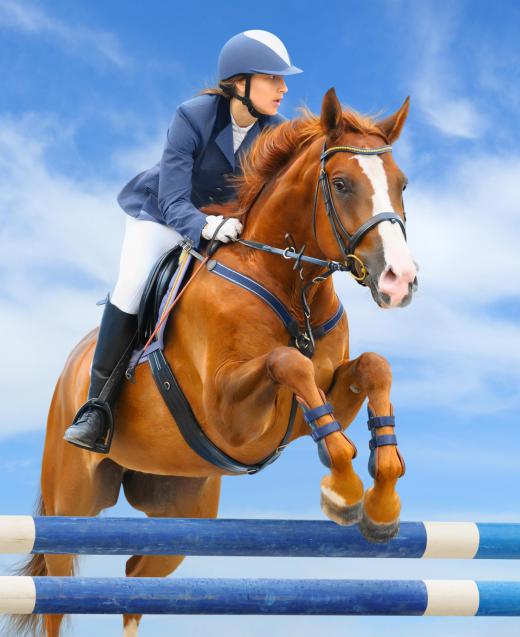Western and English riding are two different riding and training techniques which have more similarities than they do differences. Both involve controlling a horse in a variety of environments, and require a high level of cooperation between horse and rider to accomplish an assortment of tasks. The primary differences between Western and English riding lie in the type of equipment, or tack, used, and in how the horses are given commands. If a horse is trained for English riding, it can be ridden by a Western rider, with a few tips from an instructor, and the same holds true for Western trained horses and English riders.
The roots of Western riding lie in the American West, when cowboys trained horses specifically for use on large ranches. They also adapted special tack to support their work. Western tack involves a much larger saddle, which distributes the weight of the rider across the horse's back, making it easier for the horse to work a long day. The saddle is also built to be comfortable, as a cowboy may spend many hours in it. The stirrups of a Western saddle are traditionally worn longer, and the saddle has a large forward horn to drape a roping lariat from. The Western bit is also different than the Eastern bit, designed to help the rider control his or her horse.

In Western riding, the rider uses his or her weight to communicate commands to the horse, in combination with neck reining. Typically, the reins in Western riding are held in one hand, allowing the rider to use his or her other hand for ranch tasks such as roping cattle. Because the rider cannot pull separately on the reins like an English rider, the reins are gently laid across the neck to indicate the need to move or turn. Western riders may also use spurs or quirts to help control their horses.

English riding evolved in Europe, which has a long tradition of equestrian pursuits, particularly in the military. Most English riding disciplines can be tied to the training regimens used for military horses. In English riding, the tack is smaller and much more formal. The lightweight English saddle is built to maximize contact between horse and rider, and English riders also rely on their reins much more than Western riders. In English riding, the legs are used to provide cues, but so are the reins, which are held separately in each hand. Most English riders also carry a riding crop to provide further cues to their horses, and also tend to dress more formally when they are in competition.

Because of the different end purposes of Western and English training, the two disciplines compete in different events. Common Western riding events include roping, barrel racing, Western pleasure, and trail, while English riding competitions include dressage, jumping, eventing, and an assortment of hunter classes. Some equestrian sports, such as endurance riding, welcome horses trained in both disciplines.
